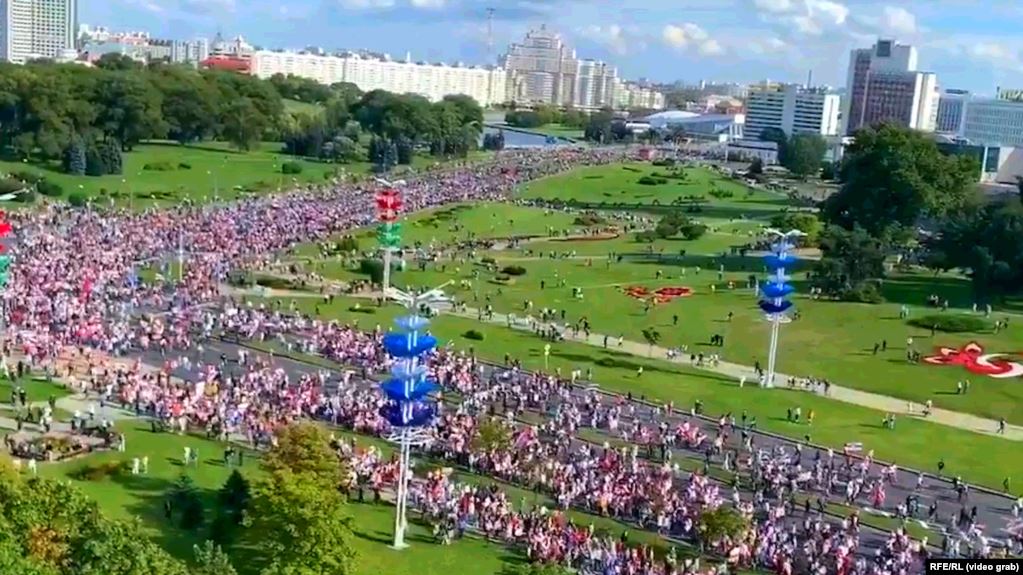
By Polygraph
TASS
Russian state news agency
“Almost 30 protest activities took place in Belarus on Sunday, the overall number of protesters did not exceed 22,000, Interior Ministry Spokesperson Olga Chemodanova said in a statement on Telegram.”
Source: TASS, Sept. 14, 2020
FALSE
On Sunday, Sept. 13, tens of thousands of Belarusian opposition supporters again marched in the capital Minsk and other cities. The protest, dubbed “The March of Heroes,” was the fifth such weekly action since the Aug. 9 presidential election.
The opposition claimed the official results showing that President Aleksandr Lukashenko, now in his 27th year in power, won 80% of the vote, were fraudulent – a view shared by the countries of the European Union, among others.
Russian state media, however, had a different take on the protests. The state news agency TASS ran two articles on Sept. 14 with contradictory claims.
One of the articles, headlined “Belarusian Police Detain 774 protesters on September 13,” cited Belarusian Interior Ministry spokesperson Olga Chemodanova, who offered a notably low estimate of how many people participated in the marches.
“Twenty-eight protest activities were recorded across the country yesterday, on September 13,” TASS quoted Chemodanova as saying. “The overall number of participants did not exceed 22,000.”
Yet, a second TASS article, headlined, “Press review: Belarusians fed up with protests and Russian voters end up as big winners,” quoted Sergei Musiyenko, identified as a ”Belarusian political scientist,” as saying that 100,000 people marched in Minsk alone. The story added that this was “not a large number for Minsk, which has a population of 2 million.”
It also quoted Musiyenko as saying: “Most of the capital’s residents have grown tired of these rallies, blocked roads and other inconveniences caused by these large crowds, including the closures of subway stations and shopping malls.”
The Belarus Ministry estimate is false, and the number attributed to Musiyenko is likely an undercount.
The figure of 22,000 march participants is contradicted by multiple independent reports, most of which estimated that around 150,000 people marched in Minsk alone.
TASS provided no evidence from surveys or polls supporting Musiyenko’s claim that Minsk residents have grown tired of the protests. Indeed, if some 150,000 people attended the Sept. 13 protest in Minsk, that would represent roughly 7.5 percent of the city’s 2 million people. Some attendance estimates were as high as 200,000, roughly 10 percent of Minsk’s population.
Of course, crowd estimates are never exact, but the Belarusian Ministry estimate of 22,000 is nearly seven times lower than the 150,000 figure, which was cited by multiple reputable media sources. And while it is true that Sunday’s march in Minsk was smaller than some earlier marches – for example the march on Sunday, Aug. 23, had an estimated attendance between 200,000 to 250,000 – the lower turnout could be explained by increased police pressure on protesters, not a lack of enthusiasm.
On Sept. 13, police reportedly detained people seen with opposition symbols. In addition, internet outages may have hampered organizing for the event.
An opposition-linked Twitter account announced on Sept. 15 that preparations are already under way for next Sunday’s protest march.
By Polygraph




